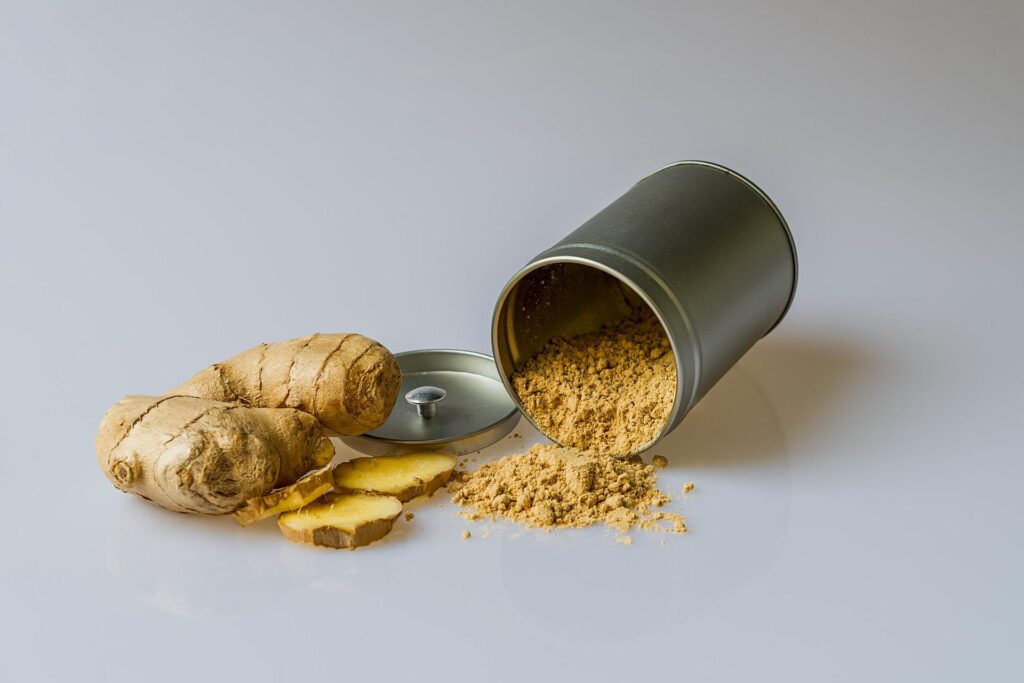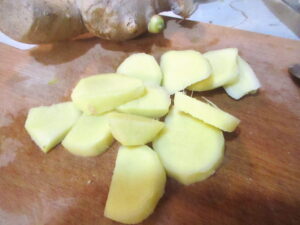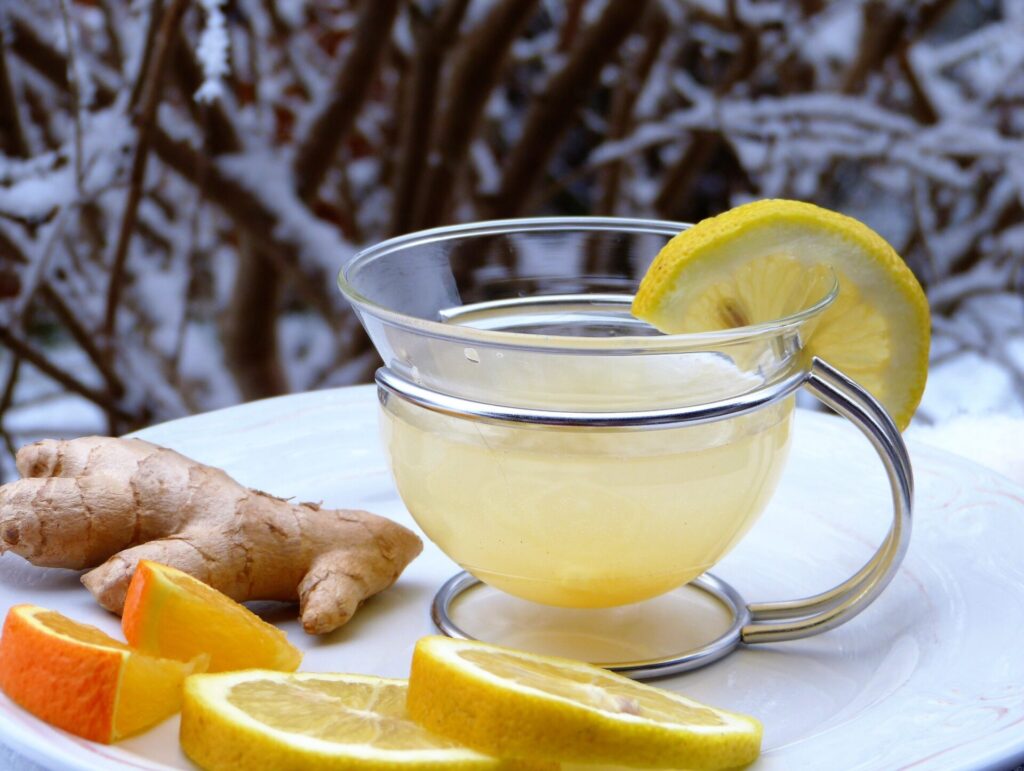Ginger has so many powerful health benefits that it’s widely acclaimed as “the Universal Medicine” in the traditional healing system of Ayurveda. Fresh ginger and dried ginger have different health benefits, so read more to learn when to use each type of ginger.
Ginger (Zingiber officinale) is not an actual root, but is a rhizome – a fleshy, bulbous growth that shoots off from the roots of the leafy vertical ginger plant. Ginger is from the same family as turmeric, galangal, and cardamom, which also have many curative properties.
Ginger originated in Asia and then, due to its fantastic flavor and healing constituents, made its way around the world. It was exported to the Pacific Islands, all the way to what is now known as Hawaii, over to India, and from there, spread to Europe in the spice trade.
Ginger has been used as a “folk” medicine and culinary delight for over 5,000 years. Despite its prominence in history, modern medicine still struggles to give a definitive on the medicinal value of ginger, stating that most claims about ginger are merely anecdotal and experiential.
But ginger’s amazing history of healing continues to be validated in people’s lives every day. It’s also not surprising that every culture throughout history has its favorite recipes, formulas, and uses for ginger. It’s a prominent spice featured in Ayurveda, Unani, and Traditional Chinese Medicine (TCM) just to name a few.

Do You Know When To Use Fresh And Dried Ginger For Health?
Fresh Ginger Versus Dried Ginger
In Ayurveda, a distinction is made between the effects of fresh ginger and dried ginger. Both are beneficial to health, but in slightly different ways. Although both forms of ginger are considered warming to the body, dried ginger is more heating.

Through the drying process, ginger’s main volatile oil, gingerol, is transformed into another phytochemical (plant chemical) known as shogaol. The drying process renders dried ginger more spicy and saogaol is more potent for some health benefits.
Fresh ginger is moistening and warming, which in Ayurveda, means that it is most often prescribed for those with a Vata constitution. Vata constitutions tend towards imbalances of lightness and dryness, such as dry skin, constipation, and gas.
Dried ginger is hotter and more drying. It’s better for regulating Kapha imbalances that result in heaviness and excess moisture, such as mucous/phlegm, and slowness to lose weight.
With many bioavailable natural phytochemicals, ginger has numerous health benefits such as:
- Reduces nausea and vomiting from pregnancy and also from chemical therapies that are known to cause nausea, such as chemotherapy and HIV therapy
- Relieves motion sickness or travel nausea
- Helps digestion, aids nutrient assimilation, relieves bloating and gas
- Aids weight loss
- Boosts circulation, may lower blood pressure, and prevent blood clots
- Helps the heart to beat more effectively, anti-hypertensive
- Is Antiviral, helps to prevent and treat colds & flu, and boosts immunity
- Is anti-inflammatory, reducing heart inflammation, and relieving body pain such as with arthritis, and also helps to dispel migraine pain
- Promotes oral health
- Clears the body of toxins and may suppress cancer cell growth
How To Use Ginger For Health
There are many ways to add ginger to your diet and daily health care program. Ginger tea, especially with lemon, is a favorite around the world. It’s always a soothing and healthy drink. Many drink ginger tea often to relieve inflammation (pain) and to relieve nausea.

For helping digestion, Ayurveda recommends taking a little fresh ginger digestive shot before meals.
All you have to do is chop, mash, or grate a small piece of peeled fresh ginger (I use a 1/2″ chunk) and place the ginger into the bottom of a small cup or shot glass. Add two teaspoons of freshly squeezed lemon juice, one tablespoon of water, and a couple of pinches of sea salt or Himalayan mineral salt. Stir together, and let the digestive ingredients fuse for at least fifteen minutes.
You can take this digestive right before any meal to help get your digestive juices flowing and help food assimilation.
After taking the digestive, you’ll have all those chunks of ginger sitting at the bottom of the cup, but don’t throw them away. You can chew on the ginger a little bit at a time whenever you feel hungry.
Adding fresh ginger to recipes when cooking is an easy way to get ginger benefits… many international recipes, especially those from a wide variety of Asian countries, call for fresh ginger.
The most convenient way to take ginger for nausea, digestion and other health issues, is to take dried ginger capsules. They’re portable and easy to use.
If you’re really into ginger and want to take it often, you can cook with dried ginger, too. Dried ginger features in numerous baked goods (especially around the holidays). It can be used to make ginger tea or as an ingredient in spiced tea or coffee. Although you can buy ginger tea bags, if you’re going to be using a lot of dried ginger, it’s most economical to buy it in bulk.
Conclusion
Ginger is truly the “Universal Medicine” that relieves numerous health complaints. If there is one condiment that you turn to regularly, not only for flavor but for its impressive benefits, it should be ginger!
Disclaimer: This post is for informational purposes only. Any material herein is the expressed opinion of the authors and is not a substitute for professional advice, diagnosis or treatment, nor has it been evaluated by any regulatory agency. All use of information herein is solely at the risk and discretion of the reader. Have a blog? This post is for sale. Contact us.